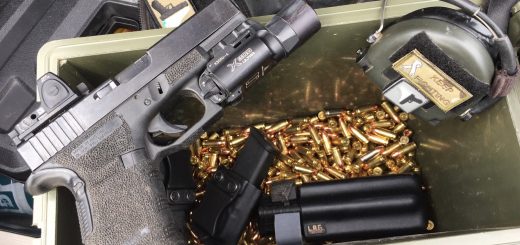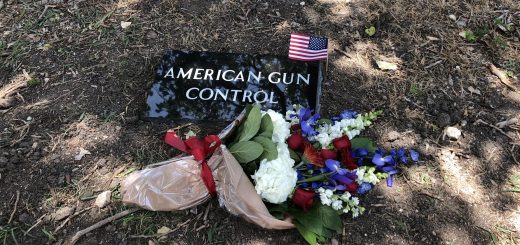This Week In History – January 6th – 12th
History is made every day, and can be anything from a source of knowledge to simple entertainment. Today, we’ll take a look at seven events that happened this week, as well as a deeper look at the life of Samuel Colt. This is the week of January 6th, meaning we’ll be looking at the 6th through the 12th.
January 6th
January 6th, 1847, Samuel Colt received a contract with the United States government for the Colt Walker revolver. It was the first of many contracts, and Colt would go on to become one of the most well-known and successful firearms creators both during and beyond his life.
January 7th
January 7th, 1920, the 143rd State Legislature of the State of New York convened. At the beginning of the meeting, Speaker Thaddeus Sweet (R-32nd District) suspended the five members of the Socialist Party (Classens, Solomons, Waldman, DeWitt, and Orr), pending review from the Judiciary Committee to determine fitness to take seats. They were expelled the first of April, and all five re-elected on the 16th of September in a special election for their seats.
January 8th
January 8th, 1815, we took a little trip, along with then-Colonel Andrew Jackson, down the mighty Mississipi. With the Treaty of Ghent having ended the War of 1812 on Christmas Eve of 1814, outnumbered, outgunned, and outskilled American forces defeated a British attack near the city of New Orleans, causing British/American casualties at a ratio just less than 10:1. Neither side had yet received word of the war’s end, as the Treaty of Ghent was signed first in Britain.
January 9th
January 9th, 2007, the first iPhone was unveiled by Steve Jobs. Though opinions are split today by brand, operating system, and other factors, the iPhone revolutionized the mobile telephone, leading to the smartphones of today.
January 10th
January 10th, 49 BC, General Julius Caesar crossed the river Rubicon with Legio XIII (13th Legion). Now an idiot meaning a point of no return, the crossing of the Rubicon was the unofficial beginning of the Roman Civil War. Following his victory, Caesar would reign as dictator for four and a half years. His name would go down in history, being shorthand for one who rules. The Imperial Russia ruler’s title, Tsar (also spelled Czar), is taken from a Russification of Caesar’s name.
January 11th
January 11th, 1935, Amelia Earhart flies solo from Hawaii to California. She was the first person to do so. Two and a half years later, on the 2nd of July, Earhart’s multi-record-setting flying career would come to a mysterious end. She, her Lockheed Model 10-E Electra, and her navigator Fred Noonan, would disappear somewhere over the Pacific Ocean during an attempt to circumnavigate the globe. Last seen on the 2nd of July, 1937, her whereabouts are factually unknown to this day, with most historians believing the two crashed or ditched into the Pacific, and died.
January 12th
Finally, on January 12th, 1930, Canada’s gift to the world was born: Miles Gilbert Horton, better known as Tim Horton. A hockey player, Horton went on to found Tim Horton’s (a coffee and baked goods fast food restaurant) along with Jim Charade. He died in a single-car crash in 1974, aged 44.
The Life of Samuel Colt
Born July 19th, 1814, to Christopher and Sarah Colt in Hartford, Connecticut, Samuel Colt would go on to become one of the preeminent firearm designers and manufacturers of American history. Working various jobs as a child, Samuel eventually set off for India on a ship. There, he combined an interest in the workings of various textile machines (having worked for a time at his father’s textile mill) with the idea of a gun that could fire multiple times without reloading. Though he likely didn’t understand it yet, Colt had just created a wooden mock-up of a revolution. He created a working version out of metal, and patented it in both England and France in 1835. A year later, he patented the design in the United States. His first manufacturing company, located in Paterson, NJ, unfortunately failed in 1842. Some did make it past manufacturing, however. Colt Paterson revolvers found their way into the hands of Texans fighting against local Native Americans. Texas Rangers found the Colt Patersons, despite their odd styling, to be incredibly powerful force multipliers.
Samuel Colt’s Revolvers
The revolver was so beloved, in fact, that Captain Samuel H. Walker of the Texas Rangers was dispatched to co-design a new, more powerful revolver with Colt. Through 1846, they created what would come to be called the Colt Walker (also referred to as the Walker Colt). A .44-caliber, black powder revolver, the Colt Walker received a United States government contract for 1,000 units. Working with Eli Whitney, Jr., of cotton gin fame, he produced approximately 1,100 – 1,000 went to the United States government, and 100 were reserved for commercial sale.
Under Colt’s Patent Fire Arms Manufacturing Company, Colt launched what would become a veritable economic empire. A year later, in 1848, Colt would create one of his most famous revolvers – the Colt Model 1848 Dragoon. Another .44-caliber, black powder revolver, the Dragoon. Between 18 and 20 thousand Dragoons were made between 1848 and 1860, for both civilian sale and government contracts. It served on both sides during the American Civil War.
Samuel Colt would die in 1862, having openly sold weapons to both sides of multiple conflicts (including the American Civil War), peacetime governments, and civilians, for a total net worth at death of approximately $15 million. This was hardly the end of Colt’s Patent Fire Arms Manufacturing Company, however. In 1867, the world would lay its eyes on “the greatest handgun ever made. The Colt Single Action Army.” The “Peacemaker,” as it would come to be known, was perhaps the most successful firearm in history at the time. The Peacemaker became a staple of the frontier, and later a staple of the Western genre of movies and literature.
This wasn’t the end of Colt’s handheld hits, though. John Browning, the most successful and well-known firearms designer in history, worked with the Colt company for years. Eventually, Colt manufactured the Browning-designed handgun, the venerable Model 1911. Chambered in .45 ACP (Automatic Colt Pistol), the Model 1911 (or M1911) would become the most successful handgun of the early and mid-20th century. Even today, 1911s are in the cultural consciousness of most of the West. As it was the standard-issue for the United States armed forces until relatively recently, the M1911 was seen as a symbol of the United States. Along with this, Colt would manufacture other Browning-designed firearms including the Model 1895 Colt-Browning “Potato Digger” machine gun, and the Model 1918 Browning Automatic Rifle.
Come on, you know what it looks like.
Almost one hundred years after the death of the company’s founder, Colt’s Manufacturing Company would strike gold once more. In 1959, ArmaLite, another firearms manufacturer, sold the design of their AR-15 to Colt in an effort to keep the company running, as they’d been facing financial difficulties. In 1964, Colt won a contract with the United States military. The modified ArmaLite Rifle, Model 15 (now the Colt AR-15) was adopted by the United States military as the M16. Dozens of variations of the AR-15 now serve in more than fifty nations. Hundreds of companies manufacture their own AR-15 variation today, and if you read this blog, chances are you’ve either got an AR-15 style rifle with you right now or you’ve got one nearby. Recently, Colt has undergone various economic issues, filing bankruptcy more than once. Today, it is owned by Cannae Holdings Inc., and recently announced new production of the Python, one of their most famous revolvers after the Peacemaker.
You know what this looks like too.
Born to a textile factory owner, Samuel Colt would go on to become one of the most famous firearms designers in history. The only man to unarguably surpass him, John Moses Browning, would have his most famous creation built by the company Colt built. Colt managed to become one of the greatest success stories in American history, and on the 6th of January, 1847, his first government contract was issued, beginning a legacy that would last more than 150 years. He’s buried at Cedar Hill Cemetery, Section 2, Lot 2, in Hartford, Connecticut.
This article has been credited to contributor, Steven A.




